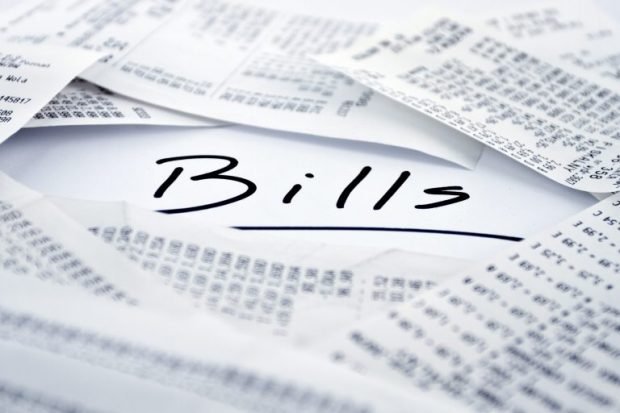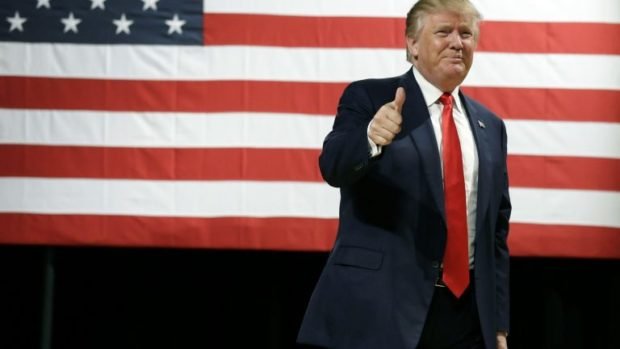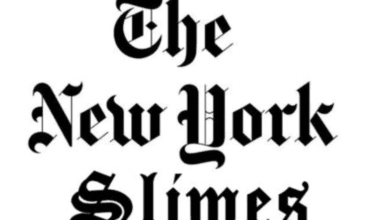New Highs for Stocks Belie Underlying Economic Weakness
As the stock market has been advancing into all-time high territory this week, many Americans are wondering how the economy can be so great while they’re struggling so hard to make ends meet. Let’s correct that perception immediately: the stock market is not the economy, and should not be conflated with it. The stock market is only one of many indicators that measure the financial health of the country. Wall Street, our metonym for the financial markets, rarely resembles Main Street, U.S.A., and this market run provides a perfect illustration of that fact.
The Dow Jones Industrial Average (DJIA), a composite of stock prices of 30 of the top companies in the country, has been in record territory for the past week. The Standard & Poor 500, an index comprised of a broader selection of 500 of the largest companies representing all sectors of the economy, closed Friday within five points of its closing record high. This is encouraging to investors, until we consider that factoring in inflation, the Dow is still about 1,500 points shy of its previous record in 2007. So while the markets are high, the significance is not.
There are primarily three reasons the markets have ascended to these lofty levels. The first is that after the market correction of 2008, earnings projections were dramatically lowered in the wake of the reduced economic growth prospects. The bar of expectations was lowered so far that they had no place to go but up, and for the next eight quarters of earnings reports, over 90% of publicly traded companies exceeded their reduced earnings forecasts. Positive earnings represent profits, which is the fuel for appreciating equity (stock) values.
The second reason is based on the cozy crony-capitalistic relationship between Washington and Wall Street. With tax-advantaged treatment, bailouts, grants, and interest-free loans, Washington has, for self-aggrandizing purposes, infused massive amounts of capital into select industries, sectors, and companies, that has significantly augmented their financial condition.
The third, but arguably most significant reason, is Fed monetary policy. Historically, the Federal Reserve, through their Federal Open Market Committee (FOMC) has had two conventional tools at their disposal to stimulate the economy, the Fed Funds Rate and the Discount Rate. The target Fed Funds Rate is the rate at which banks and other depository institutions actively trade balances held at the Federal Reserve, on an uncollateralized basis. And the Discount Rate, or window, is the rate the Federal Reserve charges member banks when borrowing money from the Feds for themselves, and not for lending to other banks.
The lower these rates are, the cheaper money is to the banking establishment, which at least theoretically, increases their lending capacity, and lowers the prime rate to borrowers. The Prime Rate, which is usually about 300 basis points (3%) above the discount rate, is the best rate for banks’ best customers, and is what most other retail interest rates are tied to.
The Fed Funds Target Rate has been at 0-.25% for the past four years, as the FOMC has attempted to “jump-start” the economy after lapsing into a deep recession in the fourth quarter of 2008. The affect has been negligible. The leading indicators of economic activity continue to show weakness.
Since near zero Fed Funds and Discount Rates have been ineffectual, and governmental policy has been counterproductive in stimulating the economy, including the much-hyped $800 billion “stimulus” spending, the Fed has had to resort to an unconventional means of economic growth. Ben Bernanke borrowed a book from the Japanese central bank to launch a process of Quantitative Easing; this is a means of infusing money into the economy by the central bank buying financial assets from commercial banks and other private institutions. Like the rates that the Fed controls, this process is designed to increase liquidity with lending institutions for new loans, using market forces to move long-term rates lower on the yield curve.
Ben Bernanke’s Fed is now in their third iteration of Quantitative Easing, referred to as QE3. The central bank is buying $45 billion in Treasury securities (bonds and notes) as well as $40 billion in mortgage-backed securities (MBS) every month, with newly minted cash from the Treasury. By so doing, over $2 trillion in new cash has been injected into M1, which accounts for all of the money in circulation, including coins, currency and demand deposits, like checking and savings accounts.
Even this unconventional economic stimulus is inefficacious to Main Street, the broader economy, but Wall Street loves it, as it has been the primary mover of equity prices for the past four years. As the DJIA has been steadily recovering since 2009, actual economic growth has virtually stalled. Recently revised fourth quarter gross domestic product (GDP) figures show the economy barely grew at an annualized rate of .01% last year. This is not a healthy or expanding economy, especially when compared with China’s 7.5% GDP growth rate.
“It really feels like this is what $8 trillion gets you, between deficit spending and money printing,” said RC Peck, chief investment strategist and CEO of Fearless Wealth. “It’s been about $8 trillion over the last four years and I really don’t think we’d be at these prices [if it weren’t for that].”
Bond manager Jeffrey Gundlach, CEO of DoubleLine Capital concurs. Gundlach says, “The slow-growth U.S. economy is living on cheap money as is the bull market, which is in its last stages.” He explains that the central bank is committed to “easy money,” referring to the accommodative low rate policy and quantitative easing. He calls these policies “circular financing schemes.” He believes that the equity bull market is in its seventh inning and when the game ends it will be “unpleasant.”
Those with 401(k)s are beneficiaries of the market run, as are other private investors with stock holdings. But aside from that, ascending stock prices have little impact on most Americans.
The economy has not improved in any tangible way for the millions of Americans struggling with unemployment and underemployment. A healthy jobs market is crucial to strengthening the middle class, which currently exhibits a troubling lack of long-term stability. More people have dropped out of the work force than at any other time, and median household income continues to decline.
Lawrence Katz, an economics professor at Harvard said recently, “You’re really struck by the unevenness of the recovery. The top end took a whack in the recession, but they’ve gotten back on their feet. Everyone else is still down for the count.”
The latest income figures from the Census Bureau confirm this. “Median household income after inflation fell to $50,054, a level that was 8 percent lower than in 2007, the year before the recession took hold.”
Just this week, the Federal Reserve announced a historic shift in its primary focus. Previously, the central bank held to the conviction that controlling inflation was their primary function, in order to stabilize and grow the economy. They now believe that improving the labor market and reducing unemployment is the key to economic recovery, growth, and stability, and their tone in doing so has been with increasing urgency. Those of us who work in the financial industry wonder why it took so long for them to realize it.
The real unemployment rate, according to the Bureau of Labor Statistics U-6, report, is 14.3%. And until that rate improves, which will have to come in the form of fiscal and regulatory reform by Washington, not just by Fed easy money policies, the middle class will continue to struggle, which translates to reduced consumer spending and fewer durable goods orders, and more small businesses strapped for cash as they compete for reduced spending dollars. As it is currently, Wall Street is ascending, while Main Street declines. When this bifurcation ends, it will be cause for celebration when the markets reach new highs.
AP award winning columnist Richard Larsen is President of Larsen Financial, a brokerage and financial planning firm in Pocatello, Idaho, and is a graduate of Idaho State University with a BA in Political Science and History and former member of the Idaho State Journal Editorial Board. He can be reached at rlarsenen@cableone.net.





The stock market is so over inflated it could collapse in a heart beat. The feds keep propping it up with printed paper, while the market has absolutely no liquidity of real value. With this government and the trial lawyers running the country “We the People” are in deep dodo.